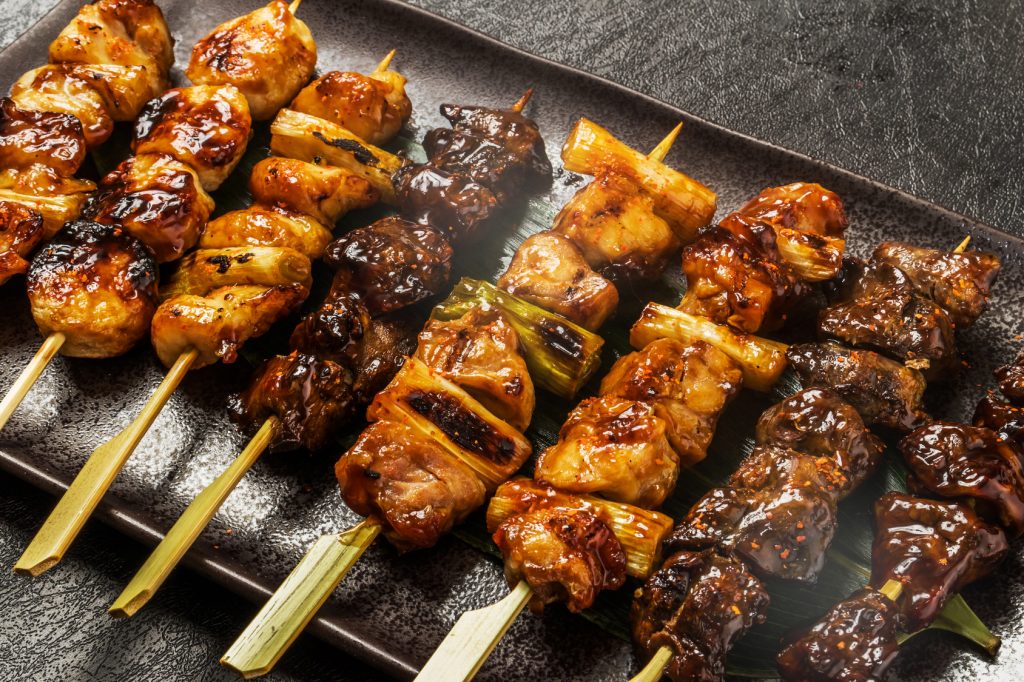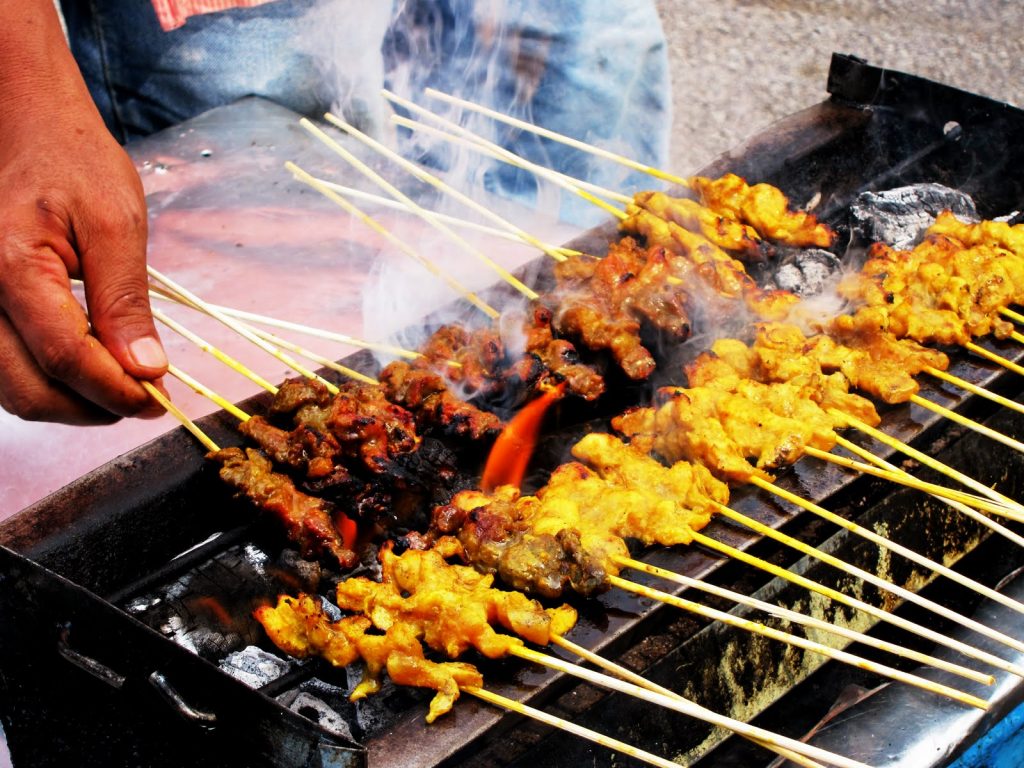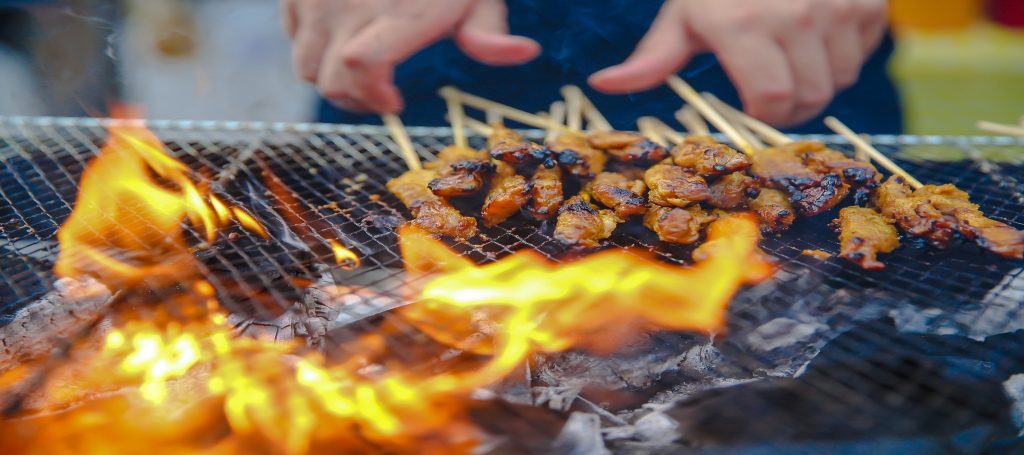‘We, Malaysians, all love our daily dose of satay. Our tremendous admiration over the skewered meat is apparent to the fact that you can find them on the menu at almost everywhere – from pasar malam, medan selera to even high-end restaurants. Not that any of us are complaining though, I mean, how can you say no to satay?
What you (probably) did not know is that satay comes from a huge family. One of its closest relatives is the infamous Japanese yakitori. Just as much loved in Japan as satay is in Malaysia, what exactly makes them so similar yet so different?
Let’s compare and contrast through this feature on Malaysia’s satay ayam and Japan’s yakitori to fully appreciate their presence in our life!

Chasing the perfect Malaysian satay and Japanese yakitori is definitely not an easy task. Despite so, it is an absolutely joyful and delicious journey. To give you a brief description, Malaysian satay is basically grilled chicken skewers marinated in spices and served with peanut sauce.
On the other hand, Japanese yakitori is grilled chicken skewers marinated in teriyaki sauce or salt. It has a literal meaning of ‘burned chicken,’ but do not let that fool you. Instead of taking the literal meaning, people grill them to the ultimate perfection in reality.
In a glance, we would have thought that the only noticeable difference is their marination sauce. But there is so much more than just meets the eye.

In a typical Malaysian kitchen, they marinate the bite-sized chicken pieces in a blend of turmeric, lemongrass, cumin, ginger, garlic, shallots, coriander, chilli, sugar, salt, and oil. Every bit of the yellow-hued skewer is rich with flavours derived from the spice.
Although the recipe differs according to one’s preferences, the underlying difference lies only in the amount each ingredient is put in. Japanese yakitori has a much more straightforward approach with their ingredients. They incorporate soy sauce, mirin, sake, and brown sugar together to form a sauce known as ‘Tare.’
The sauce gives off a sweet and salty flavour concurrently and a gorgeous sheen on the skewer. If we were to put it in a photography term, Malaysian satay has a soft doff appearance while Japanese yakitori has a shiny, glossy touch.

When talking about satay, one cannot leave out the smoky aroma infused from the charcoal over the grill fire. Although grilling it over a grill plate would have worked just fine, charcoal grill is everyone’s favourite for a reason.
There is an absolute authenticity of flavour one can only achieve from the charcoal – the golden brown crust with just the slightest hint of char. Both Malaysian satay and Japanese yakitori implemented charcoal cooking technique for two primary reasons.
First of all, charcoal allows an even radiation of heat which ensures all meat all cooked at the same time. In addition, it keeps the juiciness inside which makes the meat as tender.
The only difference between them is that Malaysian satay grill does not have the grate that the Japanese use. The horizontal and vertical cast iron line align each other perfectly and creates the perfect crosshatch grill marks.

Of course, a plate of Malaysian satay will not be complete without it’s best accompaniment: a bowl of peanut sauce and cubes of nasi impit. Whether you like it drizzled or dipped, the creamy peanut sauce is one you cannot miss. It has traces of crushed peanuts which adds a kick of texture to your satay. We’re proud to say that we love our peanut sauce with chopped chili padi or sweet soy sauce for a bolder, brighter and better flavor. Whereas we like it bold, the Japanese keeps it minimalistic like their culture. The best way to eat yakitori is on its own, with a cup of cold beer or soda. They believe that it refreshes their body, mind, and soul in almost an instant.

A little trivia on the bamboo skewers just for you. Did you notice on the shape of our Malaysian satay bamboo skewers? If you do, you would probably notice that our bamboo skewers are thin and round in shape. However, Japanese does it differently. Their bamboo skewers are flat in shape to help the meat stabilize through the constant rotation. Apart from that, a premium yakitori joint would take pride in their custom yakitori grill. They will order and design a charcoal grill which allows them to rotate the skewers continuously. That enthusiasm in satay is definitely what we’re living for!

Regardless of their difference, they are one happy family who has been through so much with us in life. They have always been there in times of hunger and save us from the crying stomach. Share with us below your satay pick, or your favourite kind of satay and the reason why! When in doubt, order your favourite kind of satay. It is the epitome of satay-faction in life.
